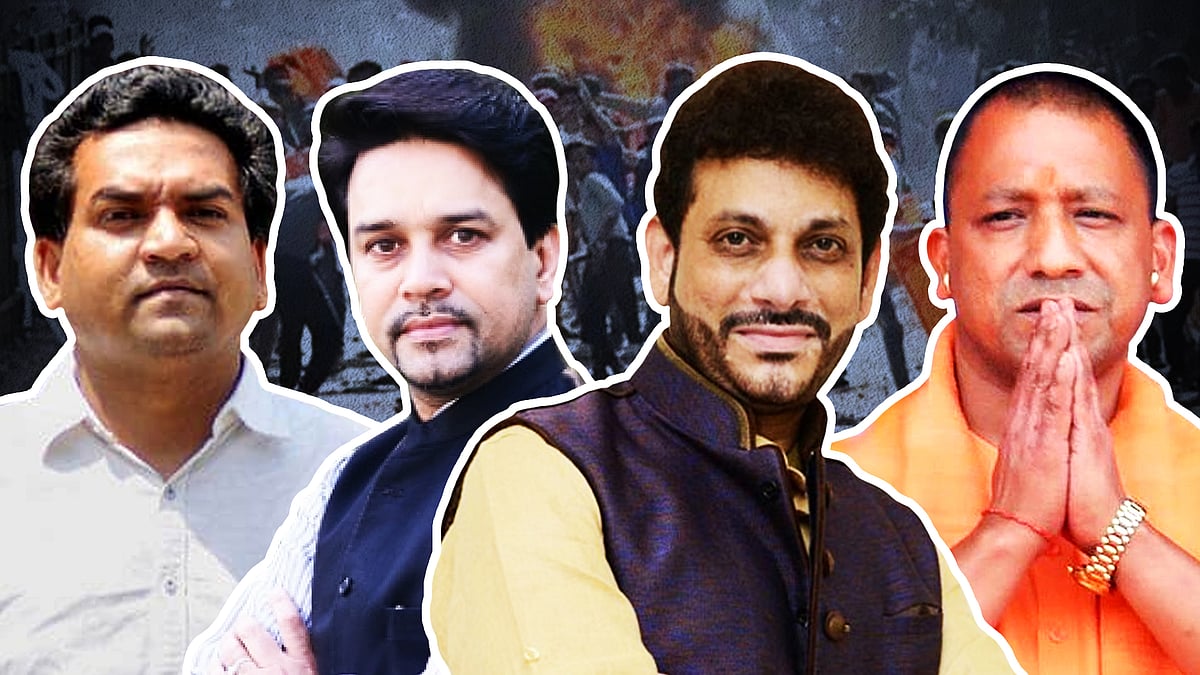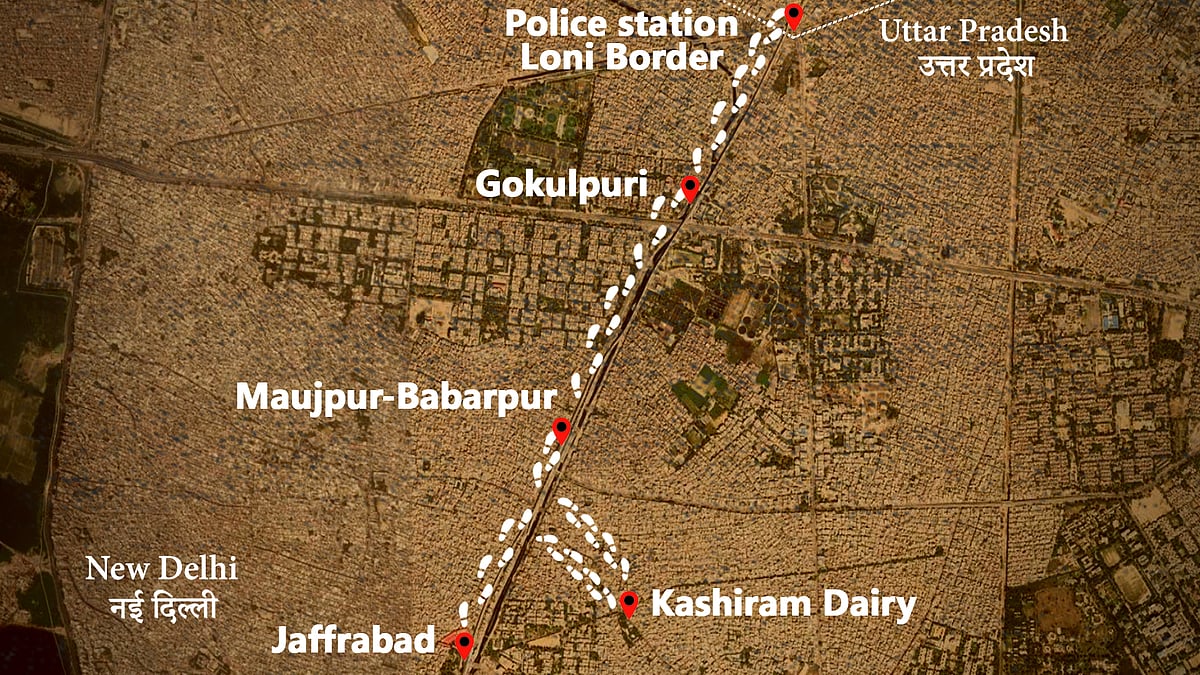‘Kejriwal must pass a resolution against NRC and CAA’: Protesters in Jaffrabad, Seelampur
‘It will be a tribute to those who voted him to power and the dead in Delhi violence 2020. We will then wind up the protest,’ they say.
The afternoon sun is just beginning to darken as rain clouds hovered above. The bustle inside the makeshift tent in New Seelampur — which now has the only peaceful citizenship law protest by women in the violence-torn district of North-East Delhi — is palpable but reserved.
It’s a Friday, and burqa-clad women and others in salwar-kameez hush their children as their teenage daughters do their namaz prayers with raised palms, hunched on their knees. The men in the locality keep a watchful eye, circling around the tent. It’s the first Friday since the horrific violence that was unleashed in the district. It was triggered by the decision of the New Seelampur women to march to Jaffrabad metro station, barely 100 yards away, responding to the Bharat Bandh call given by Bhim Army chief Chandrashekhar Azad.
The women of New Seelampur, who call themselves the Jaffrabad Seelampur Protesters, had been sitting in a peaceful dharna for two months on the sidewalk, asking for the revocation of the Citizenship Amendment Act and the National Register of Citizens. On February 22, they felt they needed to be heard, like their sisterhood protesting in Shaheen Bagh in the opposite end of the city.
The Shaheen Bagh protestors had got instant stardom, even international acclaim, for their determination, confidence and tenacity. The New Seelampur women were as gritty but they believed they were a sideshow, as they were only occupying the sidewalk across the metro line, as opposed to Shaheen Bagh, who had occupied the main street and had stopped all traffic.
The moment came, says Gul Farshin, a feisty 25-year-old management trainee and member of the Jaffrabad Seelampur Protest Committee, when Azad — a Dalit hero amongst the community — called for a Bharat Bandh on February 23 to protest against the Supreme Court’s decision that governments were not obliged to give reservations in jobs and promotions.
“The women agreed we should march to Jaffrabad station and block the road below the metro line which connects to Maujpur and Yamuna Vihar,” says Gul. “We would hold a chakka jam for a day, invite the women from the Dalit bastis nearby, and also hold a candle march.”
Within hours, the numbers swelled to hundreds, as women poured in from Welcome Colony, Janata Colony, Gokulpuri, Maujpur-Badarpur, and Shiv Vihar, even as the police arrived in huge convoys, hoping to move the women. The police used intimidation tactics like driving their buses towards the women in a threatening manner, but the protesters’ determination only grew manifold, forcing the police to back off.
The rest is now known.
The following day, February 23, Bharatiya Janata Party leader Kapil Sharma — who suffered a humiliating defeat in the recently concluded Delhi poll — made a hate speech against the protest, demanding they leave or be forcefully removed.
Gul says, “By then, goons had gathered across police barriers on the other side, and our men stood in front of the women, to defend them. The battle lines were clearly drawn and after the stone pelting, we were asked to disperse after curfew orders.”
The violence spread like a blaze. beyond the barricade on the other side right up to Ashok Nagar, while the women who are part of the Jaffrabad-Seelampur protesters retreated to their site.
Sajid Khan is the effusive proprietor of Khan Sahiba Chicken shop. He stirs a large cauldron of chicken korma over a makeshift gas stove that has been hauled next to the protest tent on the inner side of the sidewalk. He’s jovial as he barks orders to volunteers who scurry away to pick up giant khameeri rotis, while he tries to lift the mood of anxiety and apprehension among the women.
While the area was left untouched by the violence, all the shops lining the streets have had their shutters pulled down for over five days. All of them have anti-CAA graffiti scrawled on them. “Many are still coming from namaz, they all have to be fed,” Sajid explains. “This is my contribution to the women.”
Nearby, Mohammed Ansari holds a table-size tray above his head as he serves the women kheer in small clay dishes. “It’s all gifted by the locals here,” he says.
The Jaffrabad-Seelampur protest committee is huddled inside the one-room tenement belonging to the boisterous Sundari Khan and her family. They don’t blame themselves for the violence that engulfed North East Delhi, but they’re still reeling from the inaction of the Delhi police, who is squarely blamed for not just their inaction in quelling the violence, but for also abetting and goading perpetrators of murder, arson and looting.
It took five days for the police to finally register 148 FIRs, as the police spokesperson said, and arrest or detain 630 people. Meanwhile, the death toll has risen to 42, and over 250 injured people have been admitted to various hospitals.
Tasleem Ahmad, who conducts classes in the study centre of a private school, is another volunteer in the committee. Tasleem has been coordinating relief efforts in the violence-affected areas nearby, especially with Harsh Mander and his concerned citizens’ collective. “The Kejriwal government had not come to meet the displaced or set up relief camps. There still are no big relief camps even today.”
There is a lot of discussion amongst the tiny group of young adult committee members over Mander’s appeal for the withdrawal of all protests in the light of the recent violence. Mander — along with other citizen collective members, Syeda Hameed, Apoorvanad, and Shabnam Hashmi — ad appealed that as a mark of respect for the dead and injured, the protests should be withdrawn.
“The movement is not by any means over,” the statement read, “and this withdrawal won’t be a defeat in any way. It is a retreat in the best Gandhian tradition which valued human lives most.”
The verdict is straightforward — there will be no withdrawal, the protests will go on till the NRC and CAA are revoked by the Modi government.
Outside, Seema Ansari, a protester, vigorously shakes her head, saying it will be a betrayal to the memory of those who died in the violence. “Their sacrifice will mean nothing,” says Seema, who grew up in Bhendi Bazaar, Mumbai. She moved to Bareilly from Mumbai, and then to Delhi after she got married.
“How can we make their martyrdom meaningful if we retreat now?” she asks. “The violence, destruction, deaths need not have happened at all if we were going to back off.”
Her opinion is chorused by other women, their determination is unshakeable.
However, committee members agree that if there’s one person who can salvage the whole situation, it’s none other than three-time Delhi chief minister Arvind Kejriwal. Kejriwal rode a giant ant-BJP hate campaign to vanquish the BJP and come out an undeniable victor.
As Gul and Tasleem point out, “It will be the best solution if Kejriwal passes a resolution in the state Assembly scrapping the religion-based citizenship criteria for the NRC and CAA. States like Kerala, and even Bihar where the BJP is in alliance with Nitish Kumar, have passed resolutions scrapping NRC and CAA. Kejriwal also came to power with a massive majority by refusing to play the BJP's hate campaign. It will be the best gift to the people of Delhi for their support and confidence in him. Hope he won't betray us. We can assure him we will disband the protest movement forthwith.”
But it’s Shahdab, 22, who expresses a word of caution when he reminds the group that Kejriwal had used water cannons to disperse protesters who had gathered outside his residence to demand that his government come out to stop the violence.
Shahdab says ruefully: “Students were only seeking action against those who instigated and actively participated in the riots, and were asking Kejriwal to call for peace. But he didn’t come out to hear them, and they were dispersed with water cannons by the very same Delhi police.”
Even so, everyone agrees that the protest will wind up the day Kejriwal passes the resolution.
Will it be a signal for other protest sites too, like Shaheen Bagh? Tasleem says their committee cannot talk for Shaheen Bagh, which has 15 committees. It is their call to make, he says.
As the small group picks up to leave for their various tasks, it’s Shahdab again who puts it succinctly when he says, “We have to rebuild many lives, but it’s good to be alive.”
 Delhi violence: Meet the politicians taken to court for hate speech
Delhi violence: Meet the politicians taken to court for hate speech Smoke and fury: An eyewitness account of Mob Raj in North East Delhi last night
Smoke and fury: An eyewitness account of Mob Raj in North East Delhi last night
